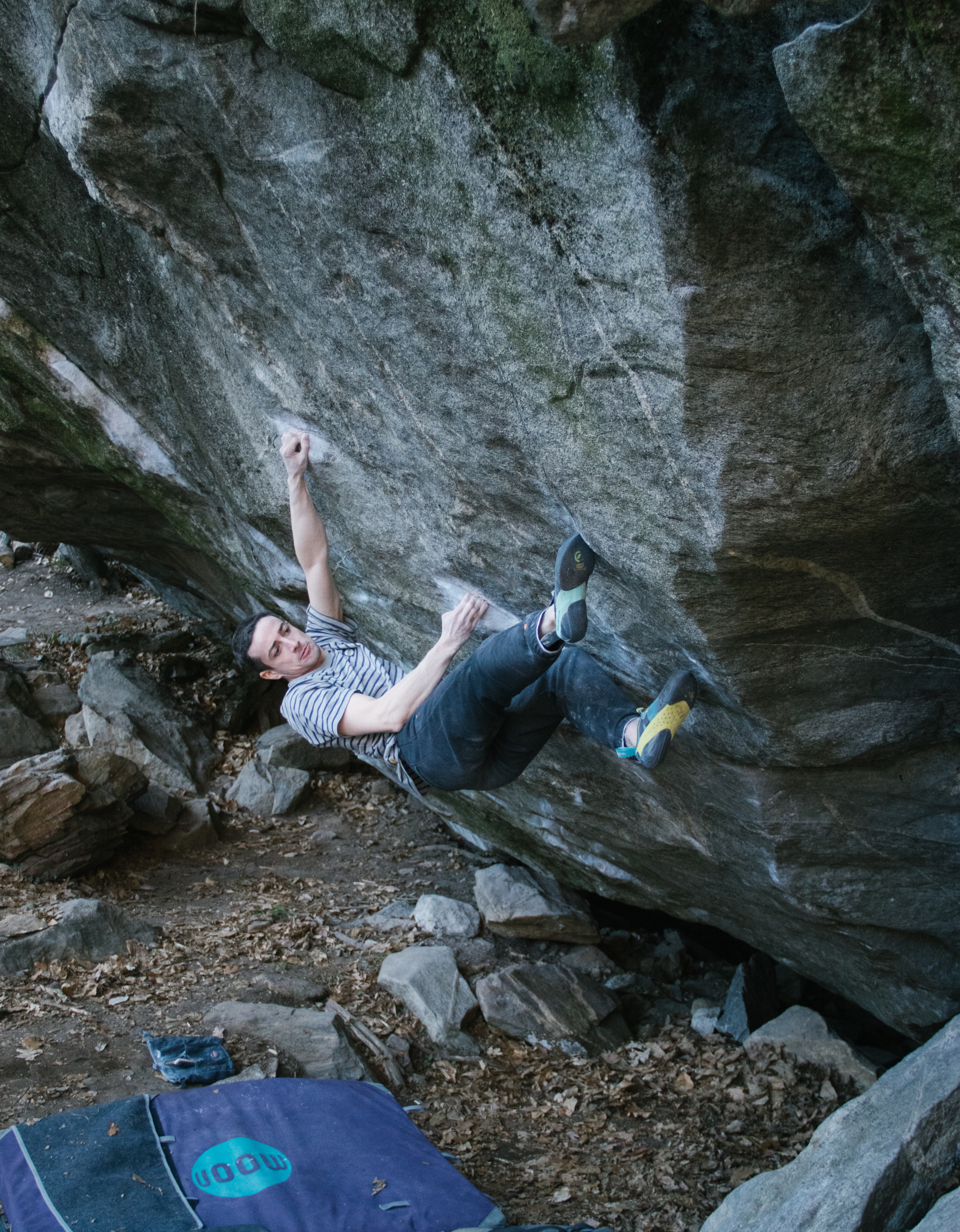
One of the interesting things about being able to return to bouldering areas year on year, is the ability to see change. Change in the climbing environment. Change in the boulders. Change in the community, and of course change in yourself. For me, seeing the changes in myself, and the climbing areas often provide the most reflective moments of any trip. Ultimately this is what keeps me coming back to climbing for more.
From a performance standpoint, returning to boulders you have tried through the years and not done is always a chance to learn. It can be a satisfying moment, seeing a move which was once simply too hard, brought into possibility in a matter of moments. This realisation is without doubt one of my favourite aspects of climbing. It’s also a feeling which is only given with hard work, and an attention to the detail of the move itself. Sometimes it’s a simple thing; “I need to be stronger on pinches”. Other times it’s more subtle; “my body needs to be strong in this quite specific position which only uses this tiny muscle”. But there is always something to learn. When you return to the boulder for the 5th year, and it’s still not possible, you begin to ask more questions; “is this a technical thing?”, “do I need to spend more time on this style of hold or move?”. Finding ways to improve for these problems is what keeps me going, and brings me back to these areas. The broader problem solving aspect of how to improve can be very addictive. You constantly want to know if you’ve improved, addressed weaknesses and created new strengths. Vecchio Leone in Brione was the problem that gave me this experience on this trip to Switzerland. My ability on pinches relative to my last attempts years prior is night and day, and I suppose I have the School Room's famous problem ‘Milk It’ to thank for this. Cheers Malc.
Seeing changes in your mentality is perhaps even more satisfying than changes in physicality. Being content with spending several days on a problem and enjoying it, rather than spending each session telling yourself “this will definitely be the one!”, and becoming deflated and frustrated when it’s not. Also finding the patience to not exhaust yourself on your first few days climbing, with an eye to maintaining an adequate level of skin and energy. Being sat at boulders you climbed on past trips, where you did the total opposite quickly puts into perspective the difference in the two approaches.
As you sit there looking at a problem you first climbed almost a decade ago, it’s glaringly obvious the change in the environment around you. The height of the landing is lower, the tree roots are more exposed, and the rock has certainly lost its sparkle. Footholds are now clearly rubberised, and holds that once had small areas of chalk around them, can now be identified from the parking area. But before I delve too much into doom and gloom, there are exceptions. Many times landings have been built, protecting the soil and tree roots from damage. Dedicated paths exist to boulders which once required an orienteering course to find. Facilities improve and the areas begin to look cleaner in places. There are both positive and negative changes to be seen in these climbing areas, if you look for them.
You also don’t have to look far to see how the popularity of outdoor climbing has grown. Areas and boulders that once only saw traffic on the weekend, are now popular every day of the week. It’s not uncommon to hear up to five different languages being spoken across an area. Nor is it rare to find people attempting their first climbs outside, only meters from some of the best climbers in the world trying their projects. This is certainly something pretty unique to climbing, and makes for a pretty nice environment, at least in my experience. Whilst change in everything is inevitable, just as we try to learn from our own performance and approach, I guess we should attempt to learn about the changes happening around us, to ask ourselves what can we do to ensure the best future for the environment. Reflecting on the past, assessing our present and trying to be thoughtful about our future.

